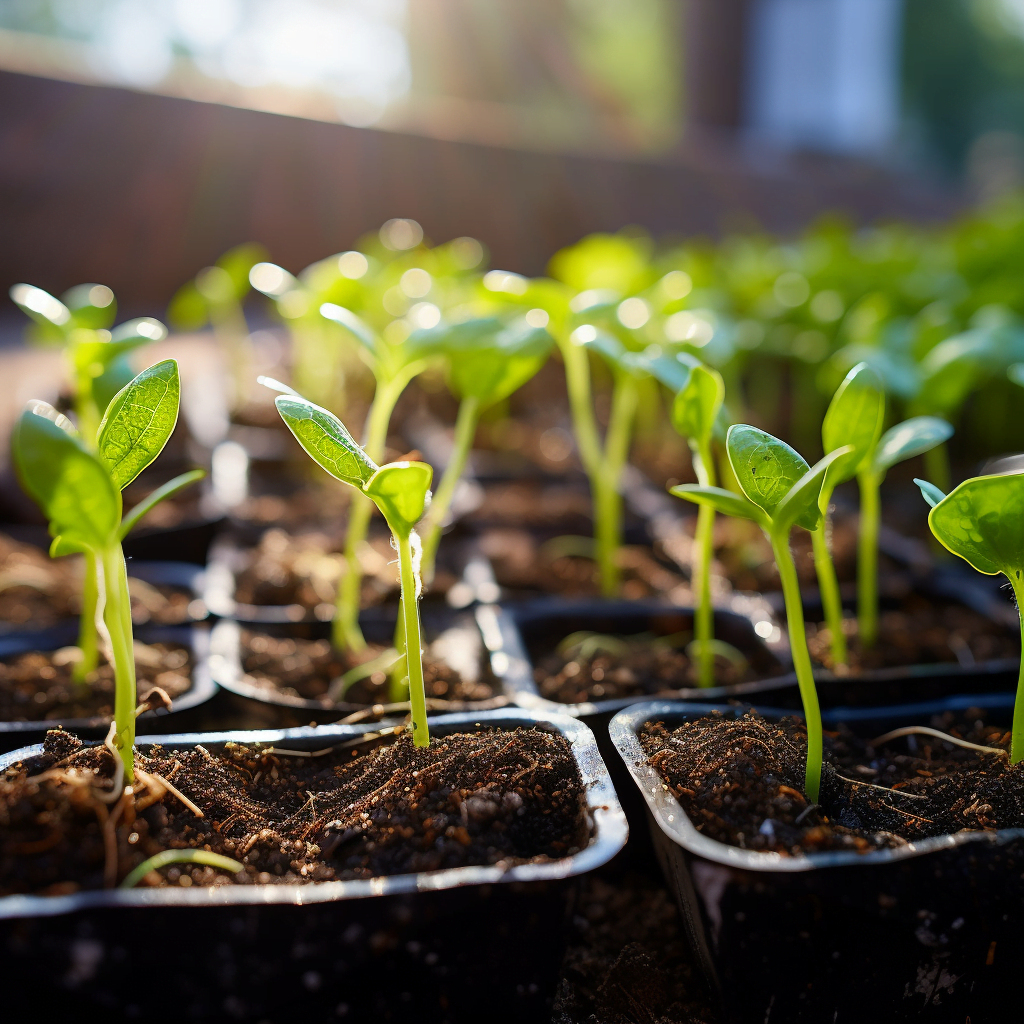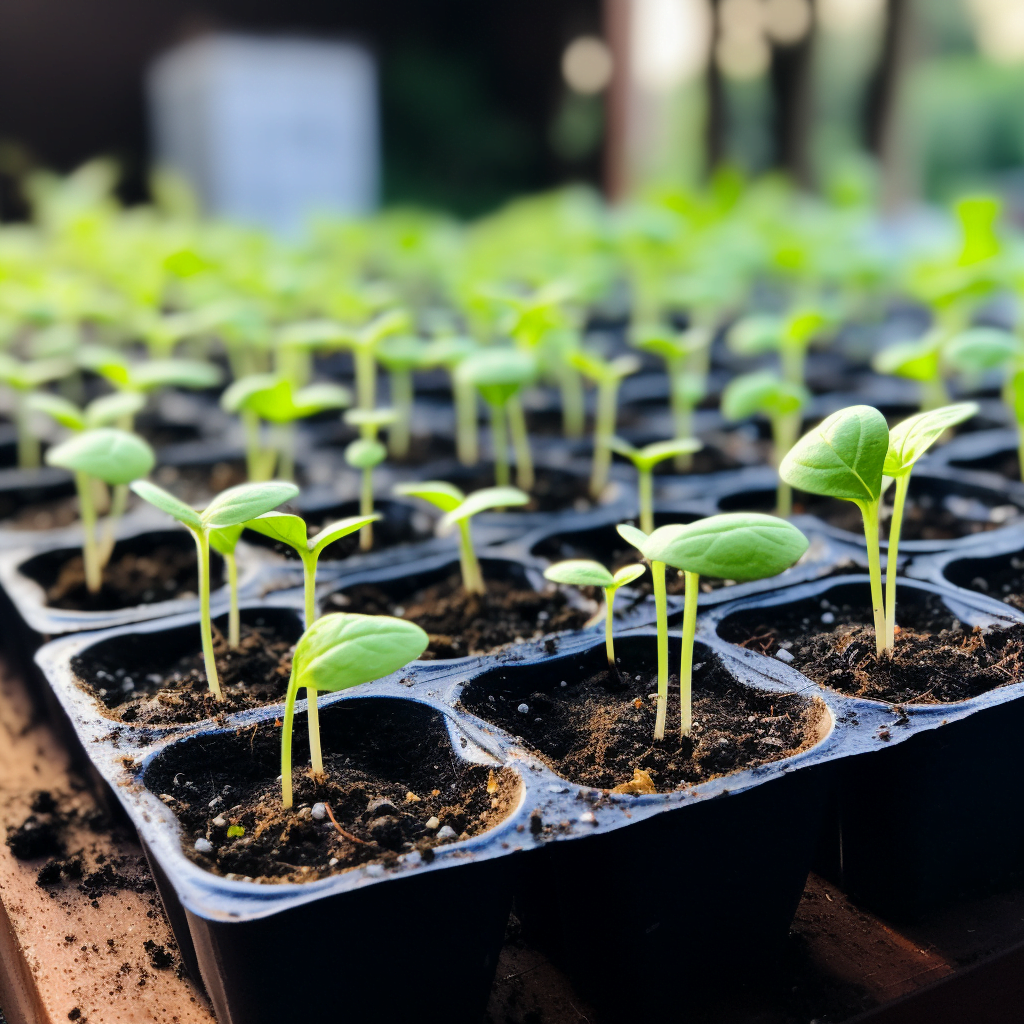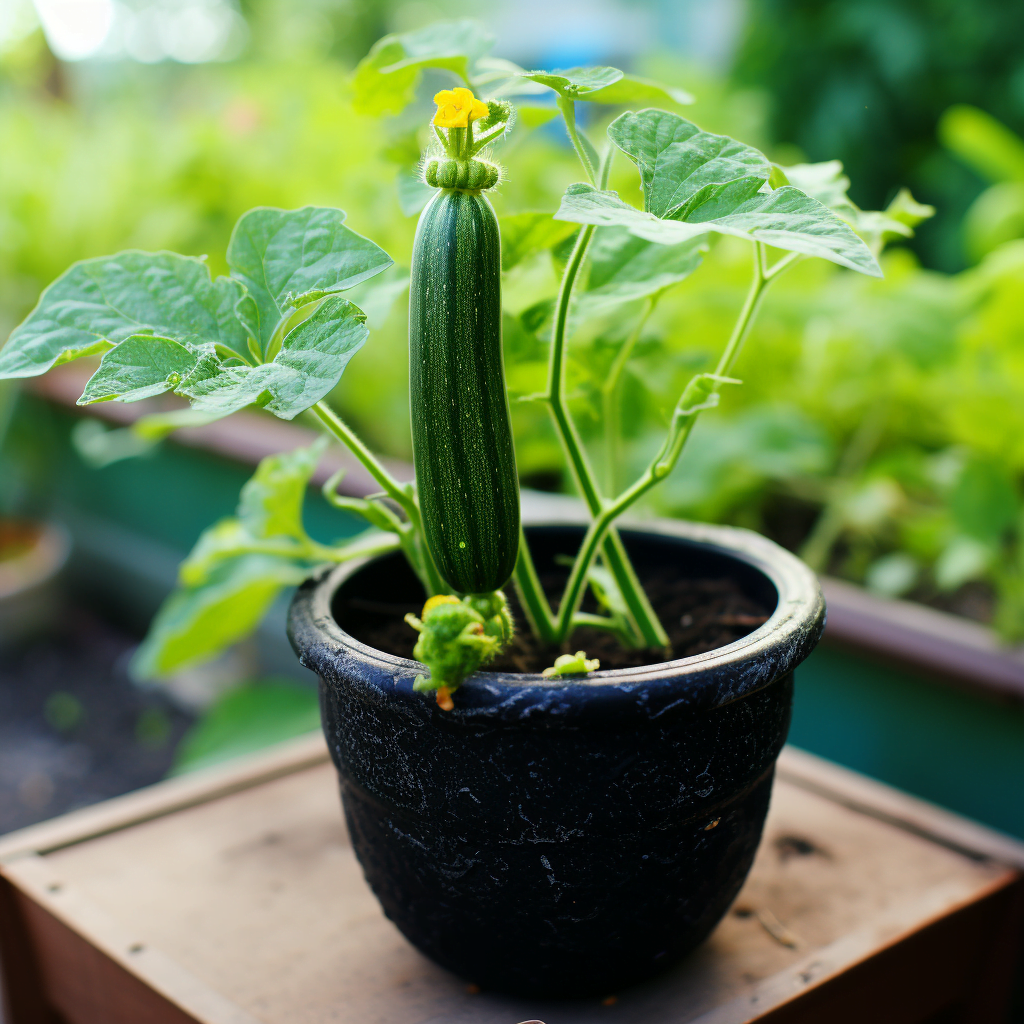Introduction
Zucchini, a summer squash variety, is a popular vegetable in many edible gardens. Known scientifically as Cucurbita pepo, zucchini is cherished for its ease of growing and high yield. Recently, indoor gardening has gained popularity, leading many garden enthusiasts to wonder, “Should zucchini be started indoors?” This article provides an in-depth exploration of this topic, offering valuable gardening tips and insights.
Understanding Zucchini
Zucchini, a member of the squash family, originates from Central and South America. It’s an integral part of many cuisines worldwide due to its versatile flavor and abundant health benefits. Zucchini comes in various types, with the most common being green zucchini, yellow zucchini, and round zucchini. Green zucchini is the classic variety, while yellow zucchini adds a vibrant touch to dishes. Round zucchini, as the name suggests, has a unique round shape and is perfect for stuffing.

Starting Zucchini Seeds Indoors
Starting zucchini seeds indoors can give you a head start on the growing season. The optimal time for starting zucchini seeds indoors is about two to four weeks before the last expected frost. By starting indoors, you can extend the growing season and enjoy an earlier harvest.
To start zucchini seeds indoors, you’ll need a few essential supplies. Here’s a list of what you’ll need:
- Seed tray: Choose a tray with drainage holes to prevent waterlogging.
- Potting mix: Use a well-draining potting mix rich in organic matter.
- Zucchini seeds: Select high-quality zucchini seeds from a reputable source.
- Grow light: If you don’t have access to sufficient natural sunlight, a grow light can provide the necessary light for seed germination and growth.
The sowing and germination process is straightforward. Fill your seed tray with the potting mix, ensuring it is moist but not waterlogged. Plant the zucchini seeds about an inch deep, spacing them according to the seed packet instructions. Gently cover the seeds with soil and lightly press down to ensure good seed-to-soil contact. Place the tray in a warm location or under a grow light, as warmth and light are crucial for sprouting seeds.
As the seedlings emerge, it’s important to provide them with adequate light. If using a grow light, position it a few inches above the seedlings and adjust the height as they grow. Once the seedlings develop their first set of true leaves, you can start transitioning them to more sunlight or a grow light. This process, known as hardening off, helps the seedlings acclimate to outdoor conditions gradually.
The Process of Planting Zucchini
Zucchini can be planted individually or grouped on hills, depending on the number of plants and available space in your garden. Each method has its advantages, so consider your specific needs and preferences when deciding how to plant your zucchini.
- Individual Zucchini Plants: Planting zucchini individually allows each plant to have ample space to grow and spread. This method is ideal if you have limited space or prefer a more organized garden layout. When planting individual zucchini plants, space them about 36 inches apart to give them room to flourish. This spacing allows for proper air circulation and reduces the risk of diseases.
- Zucchini Plants on a Hill: Planting zucchini on hills is a traditional method that promotes better drainage and helps warm the soil faster. To create a hill, mound up soil into a circular shape about a foot high and three feet in diameter. Plant four to five zucchini seeds in the center of each hill, spacing them evenly. Once the seedlings are about 3 inches tall, thin them out, leaving the two strongest plants per hill. Thinning ensures that the remaining plants have enough space and resources to grow.
Regardless of the planting method you choose, zucchini plants thrive in well-draining soil rich in organic matter. Before planting, prepare the soil by incorporating compost or well-rotted manure to improve its fertility and structure. This will provide the zucchini plants with the necessary nutrients for healthy growth.
Advanced Planting Techniques
Starting zucchini indoors is an advanced planting technique that can extend your growing season and give you a head start on producing fresh zucchinis. By starting your zucchini seeds indoors about two weeks before the last expected frost, you can ensure that your plants are well-established and ready to thrive when it’s time to transplant them outdoors.
To start zucchini seeds indoors, follow the steps mentioned earlier in the article. Pay attention to the timing relative to the last frost date in your area. Starting too early may result in leggy seedlings that are difficult to transplant, while starting too late may delay your harvest.
Once the danger of frost has passed and the seedlings have at least two sets of true leaves, it’s time to transition them outdoors. This process, known as hardening off, helps the seedlings adjust to the outdoor environment gradually. Start by placing the seedlings outdoors in a sheltered spot for a few hours each day, gradually increasing their exposure to sunlight and outdoor conditions over the course of a week. This gradual transition helps prevent shock and allows the plants to adapt to their new surroundings.
Transplanting Zucchini Plants
When it’s time to transplant your zucchini seedlings, it’s important to choose the right pot or planting location. Zucchini plants have extensive root systems, so they require containers or garden beds with ample space for root development. If you’re planting in containers, select pots that are at least 12 inches in diameter and have drainage holes to prevent waterlogging.
Before transplanting, prepare the planting area by loosening the soil and incorporating compost or well-rotted manure. This will provide the zucchini plants with the necessary nutrients and ensure good drainage. Carefully remove the zucchini seedlings from their current container, taking care not to damage the delicate roots. Place the seedling in the new pot or garden bed, ensuring that the soil level matches the level of the seedling’s previous container. Gently firm the soil around the seedling and water thoroughly to settle the soil.
Caring for Zucchini Plants Indoors
Successful indoor zucchini plant care requires attention to sunlight, water, and nutrients. Here are some essential care tips to ensure your zucchini plants thrive indoors:
Sunlight Requirements
Zucchini plants need at least 6 to 10 hours of direct sunlight per day to grow and produce an abundant harvest. If you’re growing zucchini indoors, it’s essential to provide them with sufficient light. Place your zucchini plants near a south-facing window where they can receive the maximum amount of sunlight. If natural light is insufficient, a grow light can supplement it. Position the grow light a few inches above the plants and adjust the height as the plants grow to maintain an optimal distance.
Watering Techniques
Proper watering is crucial for the health and productivity of your zucchini plants. Overwatering can lead to root rot, while underwatering can result in stunted growth and poor fruit development. The key is to keep the soil consistently moist but not waterlogged.
To determine when to water, check the top inch of soil. If it feels dry to the touch, it’s time to water. Avoid watering on a rigid schedule, as the watering needs of zucchini plants can vary depending on factors such as temperature, humidity, and pot size. Instead, use the finger test or a moisture meter to assess the soil’s moisture level and water accordingly.
When watering, aim to moisten the soil thoroughly but avoid soaking the foliage. Watering at the base of the plant helps prevent diseases and ensures that the water reaches the plant’s roots where it’s needed most. Consider using a soaker hose or drip irrigation system to deliver water directly to the soil, minimizing water waste and reducing the risk of fungal diseases.
Fertilization Needs
Zucchini plants are heavy feeders and require regular fertilization to support their vigorous growth and fruit production. Before planting, incorporate compost or well-rotted manure into the soil to provide a nutrient-rich foundation. This will ensure that the plants have access to essential nutrients throughout the growing season.
During the growing season, supplement the soil’s fertility with a balanced organic fertilizer. Look for a fertilizer specifically formulated for vegetables or use a general-purpose organic fertilizer. Follow the package instructions for application rates and frequency. Applying a slow-release fertilizer at the beginning of the growing season can provide a steady supply of nutrients to the plants over time.
Harvesting Zucchinis
Knowing when and how to harvest your zucchinis will ensure you get the most flavorful squash. Harvesting zucchinis at the right time is crucial, as they can quickly become oversized and lose their tender texture. The ideal size for harvesting zucchinis is when they are about 6 to 8 inches long and the skin is still smooth and glossy.
To harvest zucchinis, use a sharp knife or pruners to cut the fruits off the vine, leaving a short stem attached. Avoid twisting or pulling the zucchinis, as this can damage the plant. Regular harvesting encourages continuous production and prevents the zucchinis from becoming overripe. Check your plants daily during peak harvest season, as zucchinis can grow rapidly in warm weather.

Common Issues with Growing Zucchini Indoors
Growing zucchini indoors is not without its challenges. Here are two common issues you may encounter and how to address them:
Powdery Mildew
Powdery mildew is a fungal disease that can affect zucchini plants, especially in humid conditions. It appears as a white, powdery coating on the leaves, stems, and fruits of the plant. If left untreated, powdery mildew can weaken the plant and reduce its productivity.
To prevent powdery mildew, ensure good air circulation around your zucchini plants by providing adequate spacing between them. Avoid overhead watering, as wet foliage creates a favorable environment for fungal growth. If powdery mildew does appear, you can treat it by applying a fungicidal spray specifically formulated for powdery mildew. Follow the instructions on the product label and apply the spray as directed.
Pollination Challenges
Zucchini plants rely on pollination to produce fruits. In outdoor gardens, bees and other pollinators play a crucial role in transferring pollen from the male flowers to the female flowers. However, indoor plants may not have access to natural pollinators, which can result in poor fruit set.
To overcome pollination challenges, you can manually pollinate your zucchini plants. Identify the male flowers, which have a long, slender stem, and the female flowers, which have a small fruit at the base. Gently remove a male flower and brush its pollen-covered anther against the stigma of a female flower. Repeat this process for several flowers to ensure successful pollination. Alternatively, you can use a small paintbrush or cotton swab to transfer the pollen from the male to the female flowers.
Conclusion
Growing zucchini indoors can be a fun and rewarding experience, allowing you to enjoy fresh vegetables regardless of the season. While it requires some effort and care, the result is worth it – a bountiful crop of tender, flavorful squash. By starting zucchini seeds indoors, you can extend the growing season and get a head start on producing delicious zucchinis. With the right care and attention to sunlight, water, and nutrients, your zucchini plants will thrive indoors.
So why not give indoor planting a try? Whether you have limited outdoor space, want to enjoy homegrown produce year-round, or simply love the idea of tending to a garden indoors, zucchini is a perfect addition to your indoor garden. The ease of growing zucchini, coupled with its versatility in the kitchen, makes it a delightful vegetable to cultivate. So grab your seed tray, potting mix, and zucchini seeds, and embark on a gardening adventure that will fill your home with the joy of growing your own food. Happy gardening!



